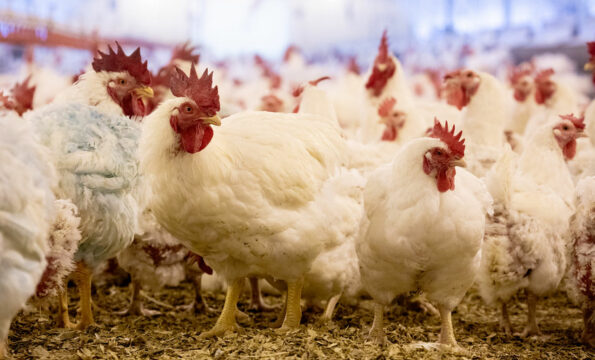Gateway Pundit, por Jim Hoft: En una reciente sesión informativa del Comité del Senado, el Dr. Robert Califf, director de la FDA, anunció las medidas proactivas que se están aplicando en preparación para una posible pandemia de gripe aviar que podría resultar mortal para una parte significativa de la población infectada.
Destacó que, aunque el riesgo de transmisión a los humanos sigue siendo bajo, la agencia no se arriesga, según Daily Mail.
El Dr. Califf informó de que hasta ahora sólo se ha confirmado un caso humano, un trabajador agrícola en Texas el pasado mes de marzo.
Texas el pasado mes de marzo. A pesar de ello, la posibilidad de que el virus mute y se propague a los humanos exige una preparación rigurosa.
El Departamento Estatal de Servicios de Salud de Texas (DSHS) emitió previamente una alerta sanitaria tras confirmar el primer caso humano de la nueva gripe aviar A(H5N1) en el estado.
La persona infectada enfermó tras entrar en contacto con vacas lecheras supuestamente portadoras de la gripe aviar, siendo la conjuntivitis el principal síntoma notificado. Es la segunda vez que se identifica el virus de la gripe aviar A(H5N1) en un ser humano en Estados Unidos.
El caso está relacionado con los recientes hallazgos del virus en vacas lecheras, según ha anunciado la Comisión de Sanidad Animal de Texas.
En marzo de 2024, se realizaron pruebas de detección de la gripe en varios animales de Texas y Kansas debido a signos de enfermedad. Estos animales incluían aves silvestres, gatos y vacas lecheras. Algunas de estas pruebas dieron positivo para la gripe aviar A(H5N1), siendo la primera vez que se detecta el virus en ganado vacuno en Estados Unidos.
El hombre desarrolló conjuntivitis pero no síntomas respiratorios, según Mirror.
«Este virus, como todos los virus, está mutando», afirmó el Dr. Califf a los legisladores. «Tenemos que seguir preparándonos para la posibilidad de que salte a los humanos».
La principal preocupación de la FDA se centra en la posibilidad de que el virus mute y afecte a los pulmones humanos, un escenario previamente observado en otras regiones donde la tasa de mortalidad ha escalado hasta el 25%, o uno de cada cuatro infectados.
Esta advertencia no es nueva. El pasado mes de febrero de 2023, la Organización Mundial de la Salud (OMS) subrayó que los países debían prepararse para una posible pandemia causada por el H5N1.
«El H5N1 se ha propagado ampliamente entre las aves silvestres y las aves de corral durante 25 años, pero la reciente propagación a los mamíferos debe vigilarse de cerca. Por el momento, la OMS evalúa el riesgo para los humanos como bajo», añadió.
Según Tedros, sólo se han observado «transmisiones raras y no sostenidas de H5N1 a y entre humanos» desde que el virus H5N1 apareció por primera vez en 1996.
«Pero no podemos dar por sentado que eso seguirá siendo así, y debemos prepararnos para cualquier cambio en el statu quo. Como siempre, se aconseja a la gente que no toque ni recoja animales salvajes muertos o enfermos, sino que los denuncie a las autoridades locales», prosiguió.
Conexión Profética:
«Porque se levantará nación contra nación, y reino contra reino; y habrá hambres, y pestilencias, y terremotos en diversos lugares.» Mateo 24:7.






Comments